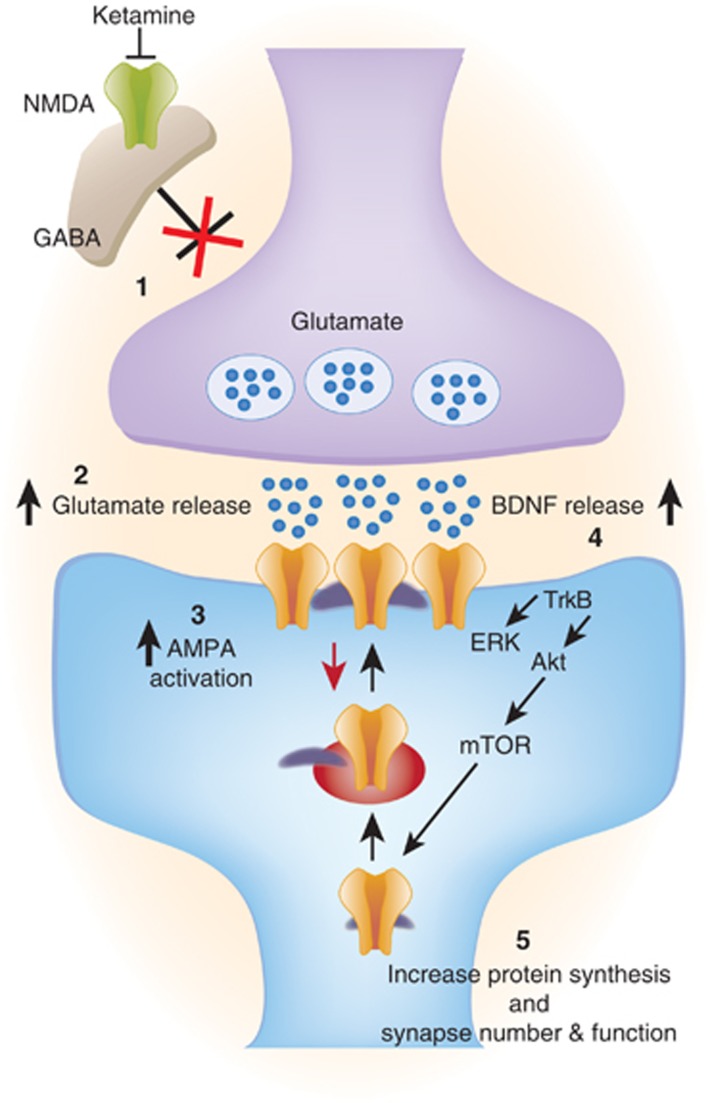Figure 1.
Proposed mechanism of ketamine's antidepressant action, whereby ketamine, through a blockade of tonic GABAergic inhibition (1), causes a surge in glutamate release and cycling (2). The resulting increased glutamatergic transmission through AMPA receptors (whose surface expression may be independently upregulated by the suppression of spontaneous NMDAR-mediated neurotransmission) (3) leads to increased BDNF-dependent (4) levels of synaptogenesis (5) that ultimately contribute to the rapid and sustained antidepressant effects.

